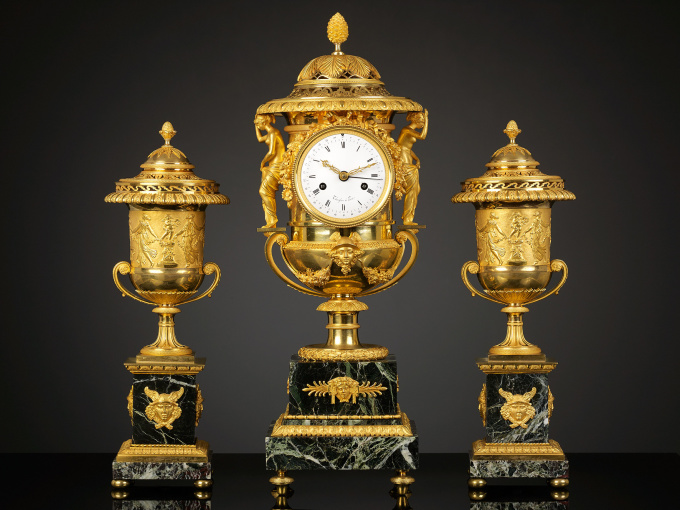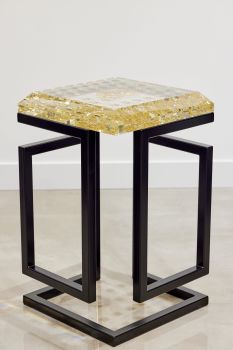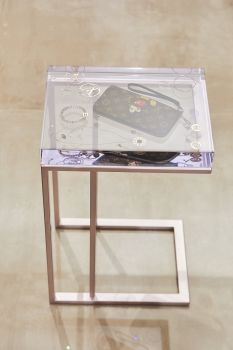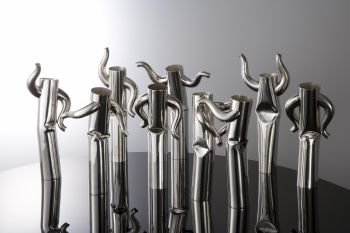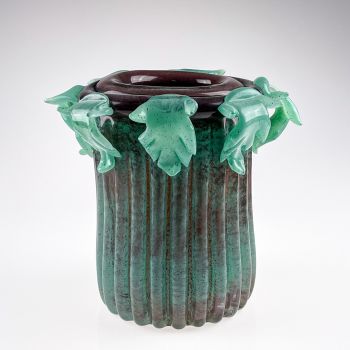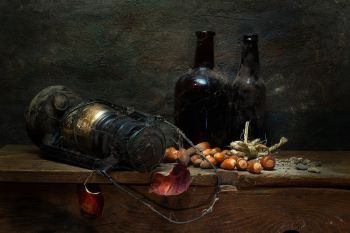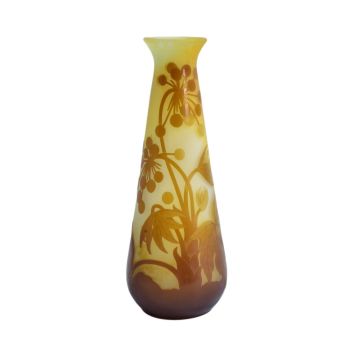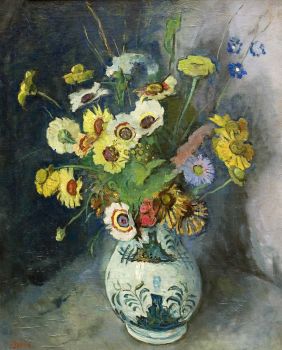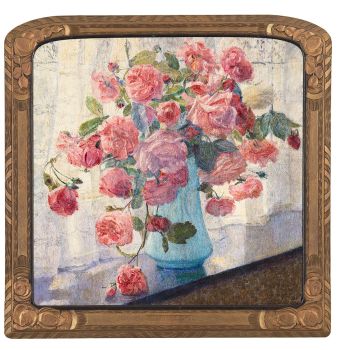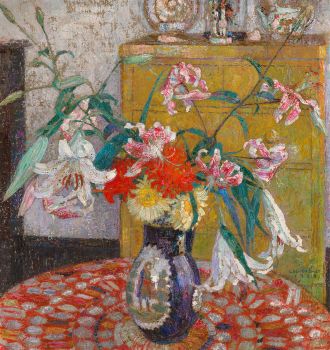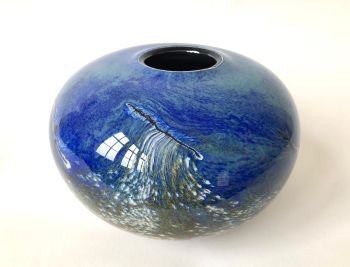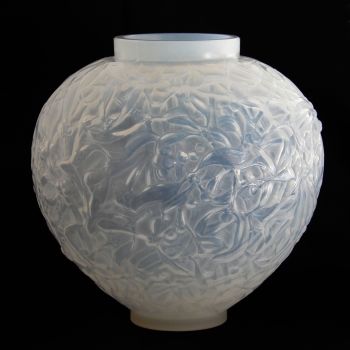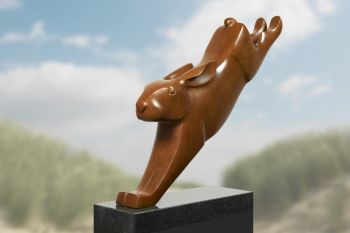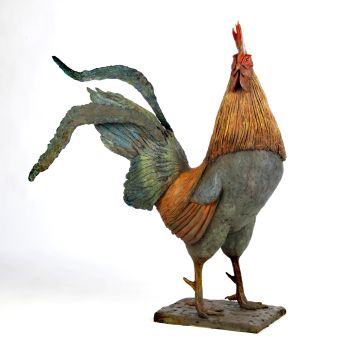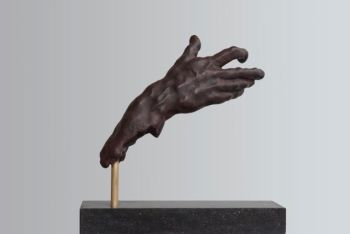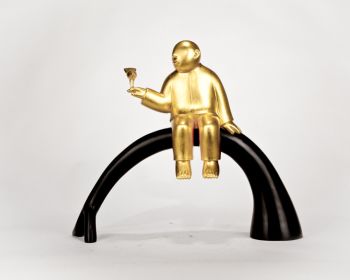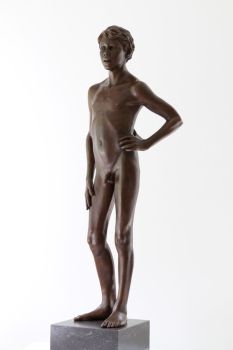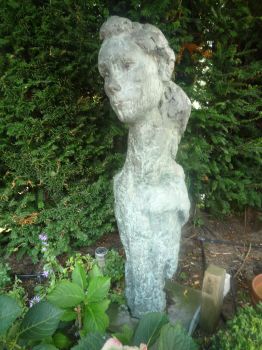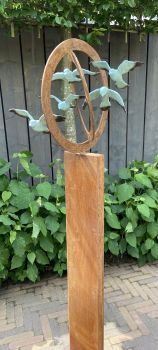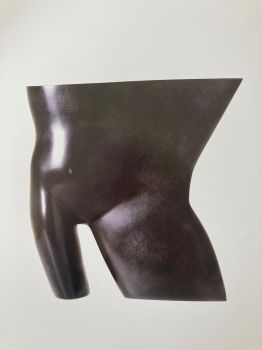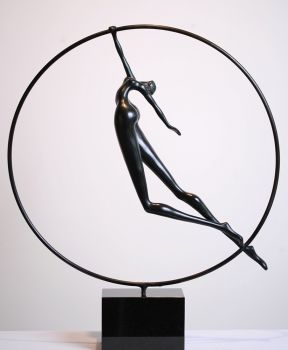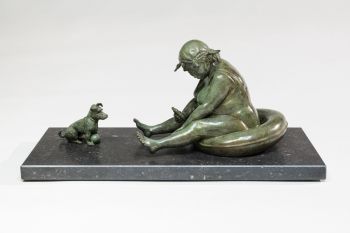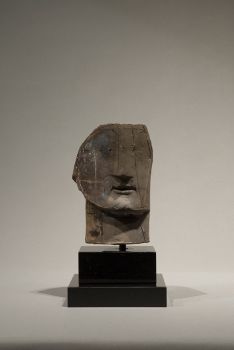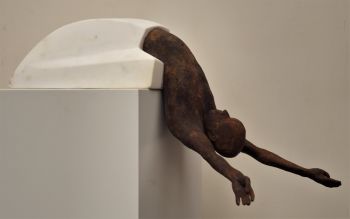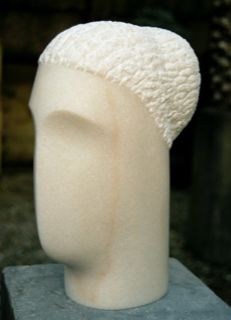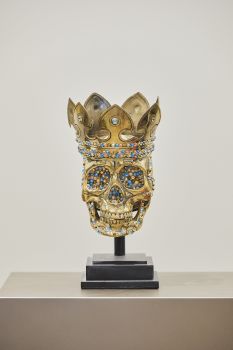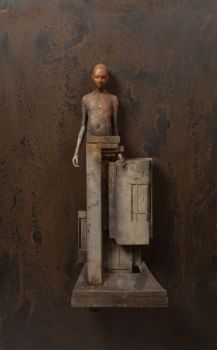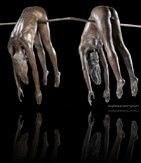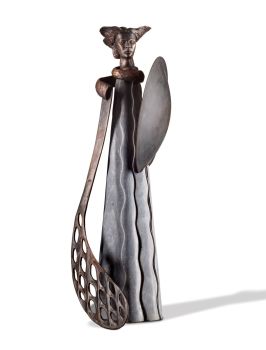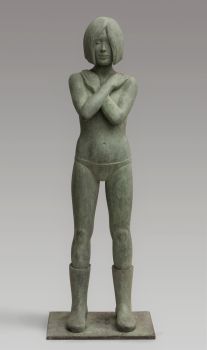An Empire Suite of an Urn-shaped Mantel Clock and Two Vases 1810
Pierre-Philippe Thomire
MarbrePierreBronzeMétal
60 ⨯ 21 ⨯ 21 cm
Actuellement indisponible via Gallerease
- Sur l'oeuvre d'artAn exceptionally large and beautiful set of two ornamental vases and a mantel clock, after a model by Thomire, and with a Clockwork by Thonissen.
Clockwork
8-day going train, striking train and central date indication. The white enameled dial shows Roman numerals for the hours and stripes for the minutes. The outer ring indicates the date (1-30) in Arabic numerals.
Signed on the dial: Thonissen à Paris
Thonissen worked from the Rue Mandar from 1806 to 1840.
The mantel clock is shaped like a “de Medici” vase and is flanked by two female figurines “à l ‘antique” who support the lid with their right hand. The, partly openwork, lid is decorated with stylized palmettes and a pine-cone finial. The outside of the dial is decorated with a beaded edge and a garland pending from the top. Underneath the dial the vase has a male portrait with a winged helmet, presumably Mercury or Hermes, flanked by floral garlands. The clock is resting on a double marble plinth with four bun-shaped legs. The pedestal is decorated with portraits flanked by stylized palmettes and an architrave with leaf motifs.
The ornamental vases have the same shape as the mantel clock, but are much simpler in their ornamentation. The body is decorated with a relief of dancing priestesses and putti. A comparable set can be found in the Duesberg Museum in Mons, Belgium.
Pierre-Philippe Thomire (1751-1843) was one of the most famous bronze casters and ciseleurs during the French Empire era. Although trained as a sculptor, Thomire chose to follow in his father’s footsteps, and take up the more lucrative profession of ‘fondeur’. He became the leading bronze artist of the late 18th and early 19th century. Thomire was trained by Gouthière and afterwards founded his own company that manufactured ornamental bronzes for furniture. Later, Thomire became assistant to Duplessis, the director of the Manufacture de Sèvres. After the death of Duplessis in 1783, Thomire turned once again to bronze casting and manufactured bronze fittings for porcelain artefacts. In 1809 Thomire was awarded the title “Ciseleur de l’Empereur”. - Sur l'artistePierre-Philippe Thomire est né en 1751 et est devenu l'un des fondeurs et ciseleurs en bronze les plus célèbres de l'époque de l'Empire français. Bien qu’il ait reçu une formation de sculpteur, Thomire a choisi de suivre les traces de son père et de se lancer dans une profession plus lucrative de «Fondeur» ou fondeur. Il est devenu le principal artiste de bronze de la fin du 18e et du début du 19e siècle. Thomire a été formé par Gouthière, mais a rapidement créé son propre atelier de fabrication de bronzes ornementaux pour les meubles. Plus tard, Thomire devient l'assistant de Duplessis, le directeur de la Manufacture de Sèvres. Après le décès de Duplessis en 1783, Thomire s'est de nouveau impliqué dans les moulages en bronze, fabriquant maintenant des raccords en bronze pour les objets en porcelaine. En 1809, il reçut le titre de «Ciseleur de l’Empereur». Nous savons que sa signature est: THONISSEN A PARIS. Il est décédé en 1843.
Artwork details
Catégorie
Sujet
Style
Matériel & technique
Couleur
Related artworks
Artiste Inconnu
Set Franse Empire Pendules / Empire Lectura penduleearly 19th
Prix sur demandeKuipers Kunst & Antiek
Artiste Inconnu
Bracelet en diamant du XVIIIe siècle avec intailles vieilles de 2000 ans1790
€ 23.000Adin Fine Antique Jewellery
 Sélectionné par
Sélectionné parDanny Bree
1 - 4 / 15Artiste Inconnu
UN FILET D'IVOIRE D'UN DUTCHMAN TENANT UN COCKEREL18th century
Prix sur demandeZebregs & Röell - Fine Art - Antiques
Artiste Inconnu
A rare Japanese export lacquer medical instrument box1650 - 1700
Prix sur demandeZebregs & Röell - Fine Art - Antiques
Artiste Inconnu
The Stamford Raffles Secretaires.1800 - 1813
Prix sur demandeZebregs & Röell - Fine Art - Antiques
1 - 4 / 24- 1 - 4 / 24
- 1 - 4 / 24

